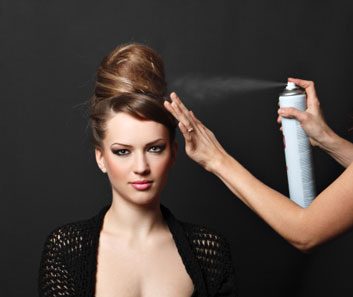How to avoid extra charges at the salon
Surprised at how much your latest salon visit set you back? Here are tips for knowing which hair treatments are going to cost extra

Source: Best Health magazine, March/April 2013; Image: Thinkstock
Q: I recently got a ‘surprise’ extra charge at the hair salon. How can I avoid this?
Typically this doesn’t happen in a salon you have been going to for years, because you know the landscape. But it’s definitely something that can happen when one is on unfamiliar territory. The friendly shampoo person or stylist tells you that your hair is too dry and needs a moisturizing treatment. ‘It’ll just take five minutes,’ they say. You say, ‘Okay,’ perhaps lulled into submission by the prospect of a dreamy head massage. And then at the checkout, your bill has an extra chunk of change on ‘it. What?! For a teeny-tiny little vial of elixir and a bit of extra time in the chair? I know, because it once happened to me when I was offered a special conditioning treatment that cost me $25. (Granted, my hair was amazingly silky afterwards, so it wasn’t money down the drain.)
But whose responsibility is it to discuss whether or not there’s an extra charge? To find out, I called the Allied Beauty Association in Mississauga, Ont., which represents the professional beauty supply industry in hair and nails in Canada. When I explained why I was calling, the person who answered the phone was amusingly blunt: ‘Well, if you were buying a car, wouldn’t you be the one to ask questions?’
The ABA (which doesn’t represent hairstylists) does not have an official policy. But Susan Solomon, its executive director, told me, ‘I would ask, ‘What is it and how much is it going to cost?”’
Sounds simple, right? Yet, we can all be intimidated at times’even though, as the customer, I think we should know what we’re getting. Lucy Valavanis, co-owner of You Salon & Spa in Richmond Hill, Ont., agrees: When a salon offers a treatment, they should tell the client upfront how much it is. ‘We want our clients to be happy, because we want them to come back.’ She advises that if you hear the word ‘treatment,’ though, it signals extra time at the sink. ‘It’s more than a conditioner,’ says Valavanis, who has been a hairstylist for 25 years. ‘At the restaurant, you get bread for free, but if you order bruschetta, you have to pay.’ She explains other situations that might cost more than what’s on a salon price list: Maybe you’re getting a blow-dry and you have extensions, or your hair is very long, thick and curly and you want it blown out straight’which may take twice as long as a regular appointment. But Valavanis says in every case, the stylist should inform the client first.
Where might there be other surprises? When you’re getting a significant hair colour change. You might go for a consultation and be given one fee, but then once you are actually in the seat and going through the process, it may end up being more extensive’and expensive’than what you initially were told.
‘A dramatic change, like going from brunette to blonde, is complicated,’ says Valavanis. Depending on an individual’s hair pigment, it might take two lightenings or more. And to get the effect you want, you may unexpectedly need to add dimension with something like lowlights. Sometimes the colourist cannot anticipate these things.
Bottom line: A salon should communicate properly and with courtesy to its clients. If you go to one that doesn’t, find one that does.
What are you curious about? Send me your beauty questions at besthealthmag.ca/askRhonda or @RhondaRovan on Twitter.
This article was originally titled "Help me, Rhonda" in the March/April 2013 issue of Best Health. Subscribe today to get the full Best Health experience’and never miss an issue!




